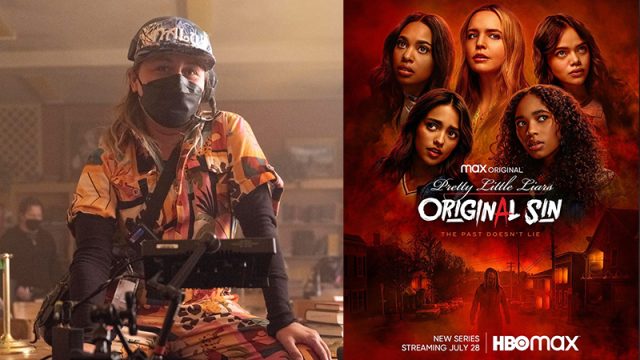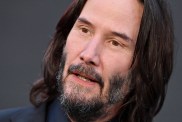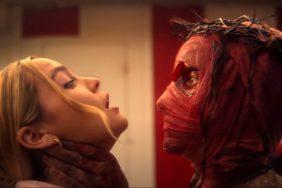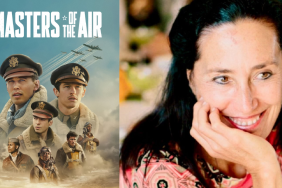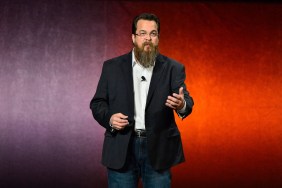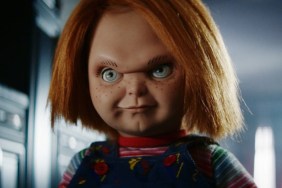ComingSoon’s Jeff Ames was given the opportunity to sit down and speak with cinematographer Anka Malatynska about her work on HBO’s Pretty Little Liars: Original Sin. The series is currently streaming on HBO Max.
Jeff Ames: What led you to become a cinematographer?
Anka Malatynska: Curiosity and the human condition.
Were there specific individuals in the field who influenced your style?
Yes. Laszlo Kovacs, Vilmos Zsigmond. One of my mentors, Jim Chressanthis, who was also mentored by Vilmos Zsigmond. There is a very specific approach of Rembrant lighting, of using backlight, which to me was most apparent in the American New Wave. When you watch Close Encounters of the Third Kind, it’s the most beautiful way of approaching light, that light can be much softer and much harder. That style can have many different iterations. In general, I don’t love flat lighting, I love epic lighting. I love things that even when they are ugly, they sing with their beauty. When I go to the movies, I go to be entertained and for me that’s a part of being able to suspend disbelief in a world that even when it’s ugly, is beautiful. That there is a poetry about it. Those are the specific people that I feel like influenced me.
I feel like early on I was really inspired by Anthony Dod Mantle. Him using ten million cameras all over the place. I felt like Slumdog Millionaire had a lot of fun and inventive energetic framing. I’m always looking for different ways to frame things.
How has your technique/style evolved over the years?
I feel like right now I am rising up from the work of being in the midst of a revolution of my style and technique. The huge way that my style and technique have evolved is that over the past three years, the sheer volume of work and the number of hours that I have worked have been immense. This means I live, eat, breath cinematography. Cinematography is my church and my daily bread. It is what my brain does more than anything else. That has liberated me into making very quick decisions. I like that Roger Deakins once said that a cinematographer’s job is to be able to foresee where they would get in trouble, if they make a certain decision. Like I will get in trouble with light, if I shoot my wide shots last and my coverage first. What will be better for the angle of the sun? Things of that nature. Where do I put the light, so I never have to move again and it can do as much work for me as possible?
Again, my whole evolution and what excites me is to be able to harness the technology, to harness the tools, but still be able to give the set to the actors and to the energy of the story, to that ethereal unspoken aspect of when we see films and they really deeply touch our hearts. How do we harness those tools not to overwhelm, but help bring that to the final product. My evolution to my style has been over the years of practicing my craft, I am comfortable with my technical tools, enough so to then ask deeper questions of what we are doing. Not being afraid of trying something new or approaching the scene in a more complicated way because I have a schedule looming before me. But to despite all that stress, stay engaged in the magic.
What was it about Pretty Little Liars: Original Sin that made you want to work on it?
The daily stills that I saw from the pilot. I thought, wow this is something really special. I read the script, I met with the team. I felt like I had a great connection with the team and was really welcomed by them. I remember that one our producer’s assistants said “I knew when we got off the phone with you that it would be you”. I felt the same way about them. Then we went into the heart of darkness, into the dark forest of the Catskills, into the cold winter woods and made a beautiful thing.
What was the most challenging aspect of Pretty Little Liars and how did you overcome it?
The weather was one of the most challenging aspects. Also, the Covid wave in January was very challenging. We overcame it by growing our schedule by close to two months. We had ice storms that knocking the power out for over three days at one point. People had to be moved from their rentals to hotels in town because there was no electricity or heat. I lived in a cabin in the woods that had a backup generator, so I was fine. We had a very challenging location that was a high school waiting for demolition. That place had bats and heat issues. We had back woods ice roads. We had snow storms. They were overcome with patience and our producers making the choice to keep us safe, rather than working at certain times. That is a big kudos to them.
Do you have any fun, behind-the-scenes stories about the making of Pretty Little Liars that you can share?
Well, we had a lot of fun every day. Even in the midst of the stress and cold we managed to have good energy on set. I can’t think of any stories off the top of my head.
What was your collaboration with the various directors on the show like? How challenging was their overarching vision?
I had some really wonderful collaborations on the show. We had an amazing pilot director who had a very strong and specific vision. She shot the first and second episodes and then I came in with Maggie Kiley. We watched Lisa’s episodes and we were to continue on the work, which we did. Of course, every director brings in a little more of their own point of view. I remember when the episode seven director came in, he said he really couldn’t see a change from the first few teams. I feel like Maggie and I did a wonderful job of watching Lisa’s work and building on it. I worked with Lisa again on episodes 4 and 5. Lisa is a very exciting and challenging director to work with. I think because she comes from animation and in animation, you can take the camera and move it anywhere. She also had incredible shot ideas. She really fought to preserve those shots in the edits. I feel like working with her on episodes 4 and 5, I got to know the series deeper. That’s where I started embracing even more lower angles. When we got together, we opened the door to these super wide angle lenses. Then Lisa left and she was going to be back for the finale and I was to carry the torch of the look of that show. I can proudly say I did and carried those things through, while at the same time having my own journey and incorporating the incoming director’s visions. I remember Lisa was very much committed to wide angle lenses as much as possible.
When I worked with Alex Pillai on episode 7, we had a couple very long assemble scenes. I remember Alex saying, “I’m going to need to use wide angle lenses and single them out.” I remember having this conversation in my head of preserving the look of the show. I think in the end, even as we osculate the use of certain focal lengths throughout the lifetime of the series. The same language following the same story, it still does preserve the look of show. So, every director is different and I believe every director is there to include, within the series, what it is their eye loves and how it is their eyes as a storyteller see. I got to work with the most spectacular people. Cierra Glaude, Megan Griffiths who directed episode 8. Every single one of these collaborations was very different and that’s the exciting part of shooting a series and sometimes the stressful part. I call it blind creative dating for directors and DPs. You never know if you will get along or say the same thing. Maggie Kylie and I had really similar instincts, so it was really easy entrance into the Pretty Little Liars world on episode 3.
You also worked alongside Joe Collins and Teodoro Maniaci … is it difficult to merge your styles or does everyone just do their own thing? (In other words, how important is consistency?)
I think consistency is really important. I really respected the vision that Joe established in episode 1 and 2. I thought it was exciting and ballsy. It was one of the things that made me want to be involved with the show. So of course, I will honor that vision and continue that vision. At the same time, I’m a human being and that world through my eyes will have its own stamp that’s a little different than Joe’s.
I worked for Teo as a loader on the first indie film I ever worked on out of NYU when I was 19 years old. I remember watching him work and the beauty of his lighting. I remember how masterful he was. When we needed a tandem DP because eventually you always need a tandem DP on a series that is that intricate. I have to scout while someone shoots. He had worked on Katy Keene for Roberto and he was suggested as a tandem DP. He came in and was so gracious and did such beautiful work. He also had a very high level of attention to detail of how we are lighting, ect. I think Teo took what I did and refined it even more. There are things that I did that beautified some of the approach of what Joe was doing. I used more eye lights and at times went softer with the light. I think Teo also beautified it even more. I think it was this incredible experience to have this DP that I had looked up to, come in and work in tandem on a series that I was shooting. He was so gracious and kind. He could have come in and stepped on my toes because he has many years of experience on me. That was a super special experience in the world of cinematography and it taught me so much about going in and being respectful and making an effort to keep the look consistent if I am ever a tandem DP.
RELATED: Live-Action Tokyo Revengers Movie Sequel Announced
Were there things you learned from working on Pretty Little Liars that you’re excited to apply to future projects?
So many things that I have already been applying on future projects. I really got into working with Titan and Helio lights. They are Astera type RGB bulbs that are single lights. They are a type of light that basically the Helios are very small and we could hide them behind furniture. I had used them a little bit on I Know What You Did Last Summer, but they became a primary tool on Pretty Little Liars. That was one of the reasons we could use those and maintain a certain soft look, because we used so much smoke, that smoke would act like a diffusion over the light. I love hiding those little lights in different places. They are very convenient and fast.
Do you have any other projects coming up that you can share with us?
Yes, I recently shot two episodes of a series called Kindred that is coming out on Fox and FX. I am really excited about the work I got to do on that series. I also have a film coming out called The Listener, starring Tessa Thompson that Steve Buscemi directed. That was an incredible collaboration. Really excited about sharing that movie.
